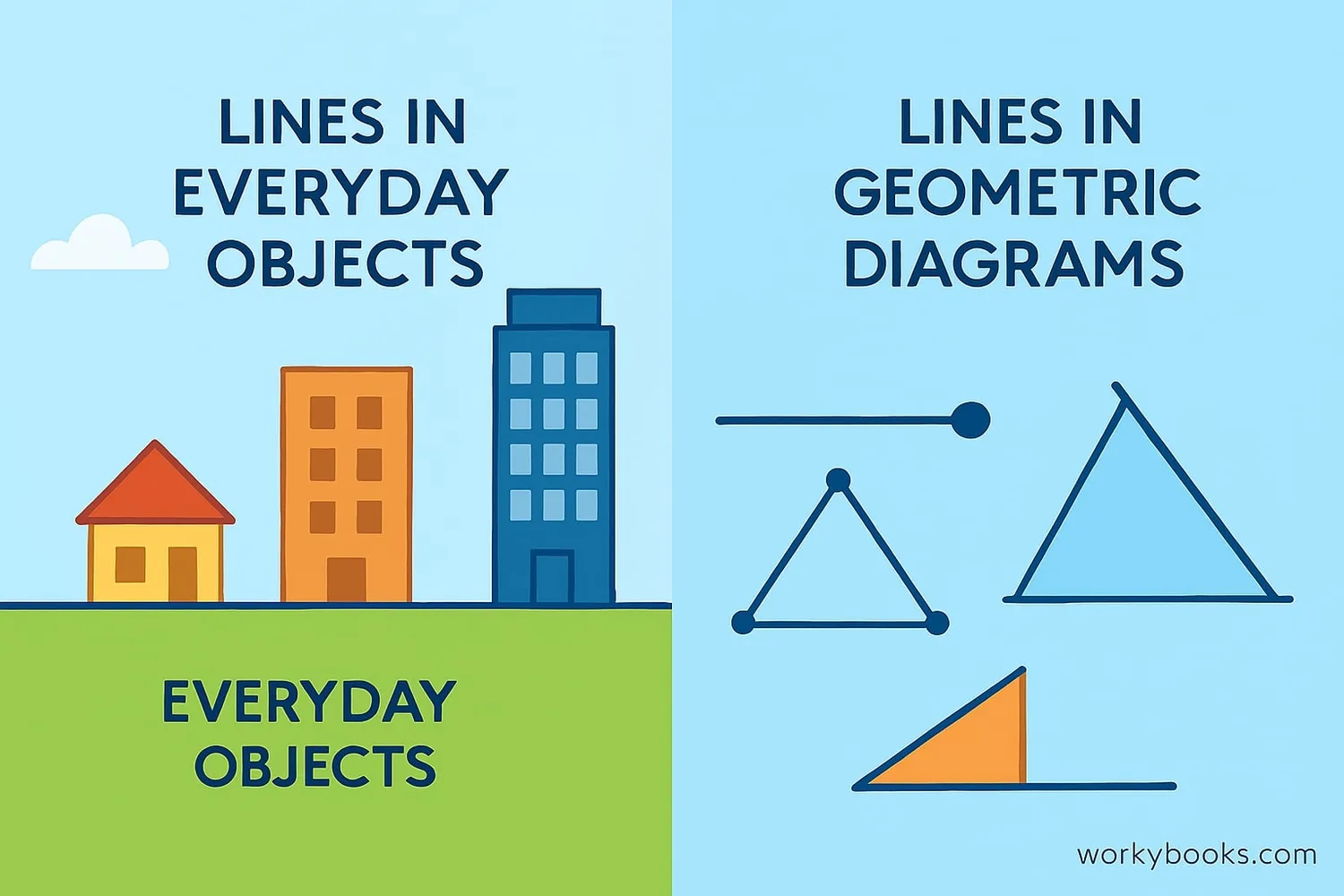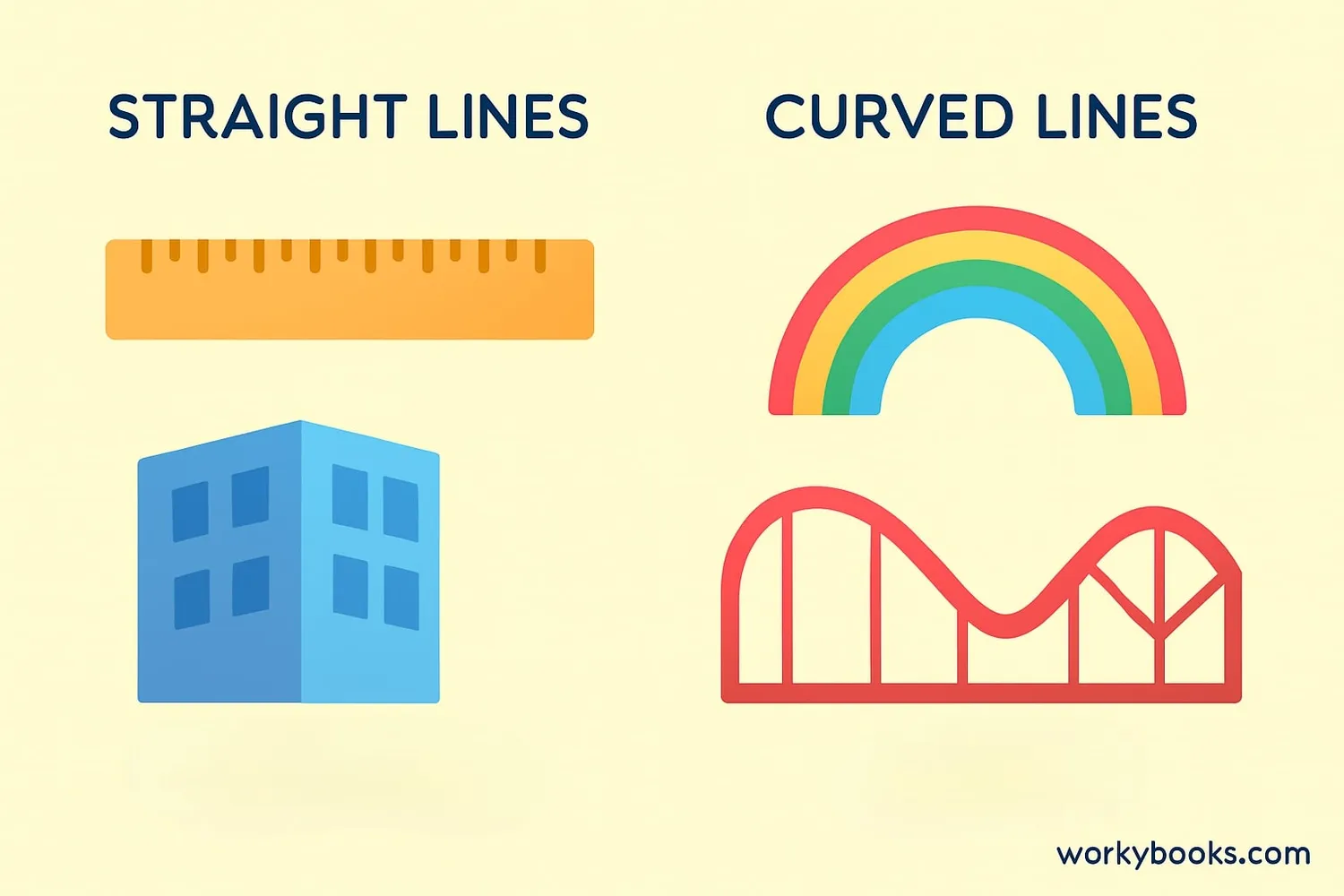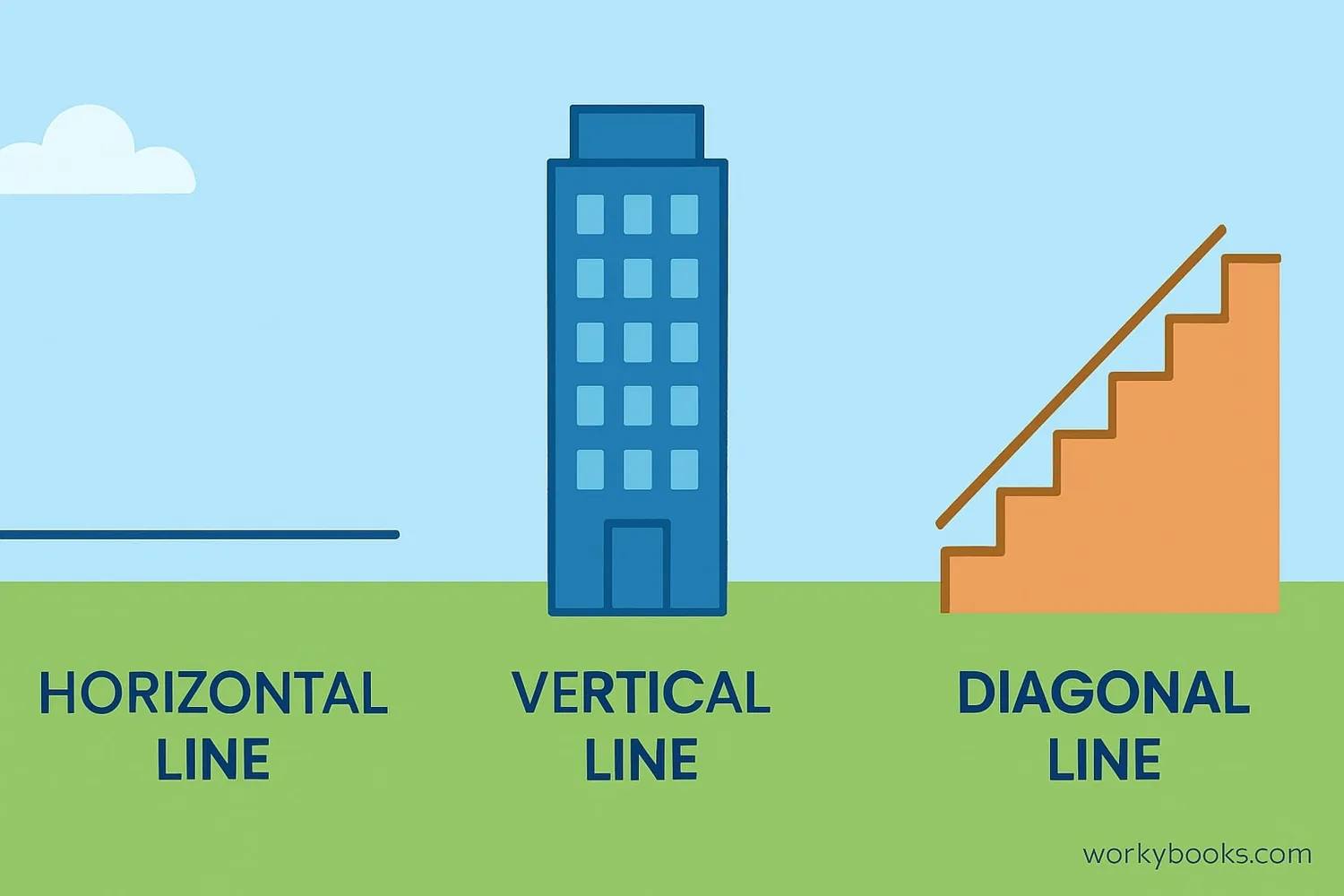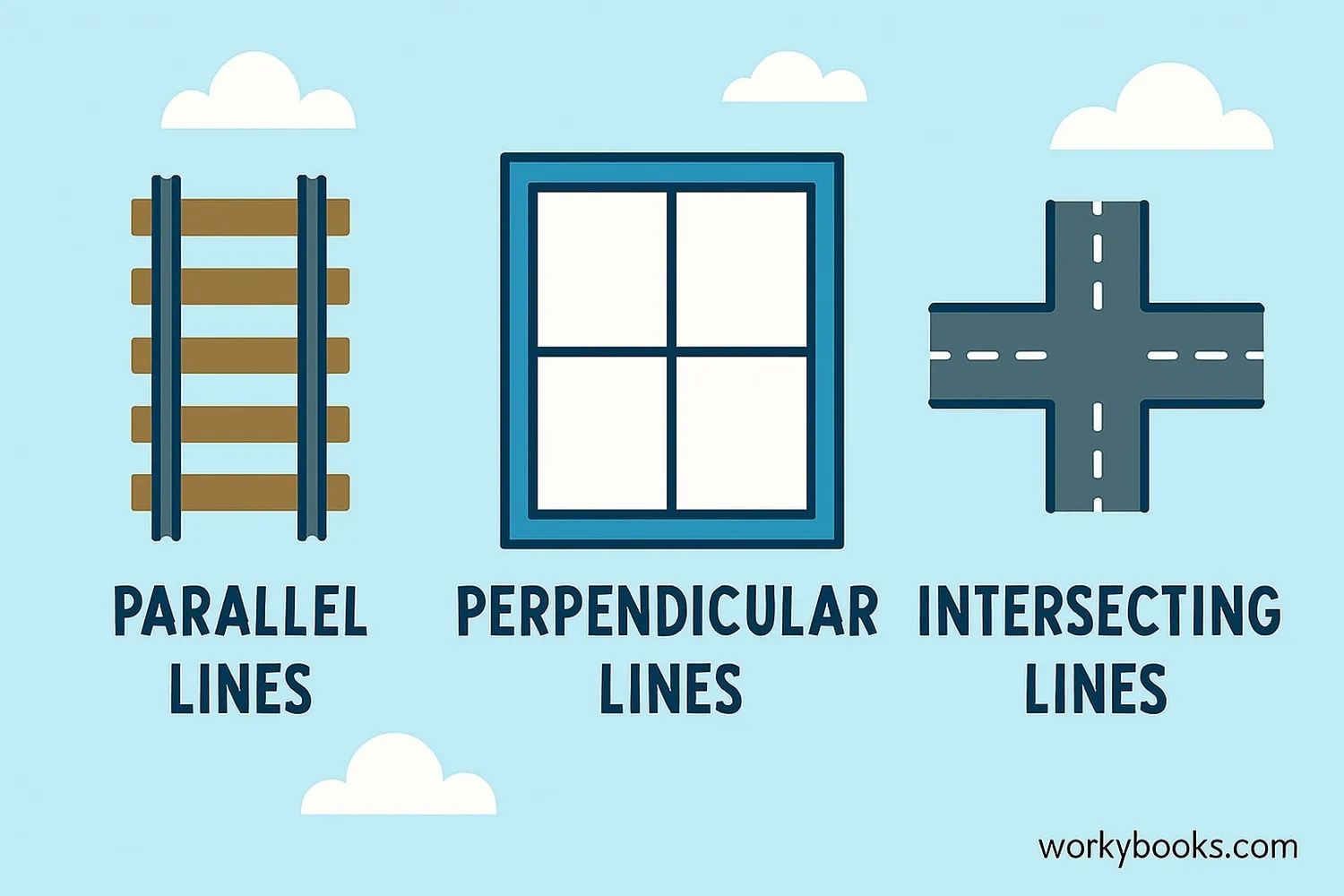Types of Lines - Definition, Examples, Quiz, FAQ, Trivia
Learn about straight, curved, parallel, perpendicular lines and more with visual examples and activities
What are Lines in Geometry?

In geometry, a line is a straight path that extends forever in both directions. Lines are one of the fundamental building blocks of shapes and forms in our world.
Lines have no thickness or width - they are one-dimensional. We use lines to create shapes, angles, and patterns. Understanding different types of lines helps us describe and understand the world around us.
Some important characteristics of lines:
- Lines extend infinitely in both directions
- Lines have no thickness or width
- Lines are made up of an infinite number of points
- Two points determine a unique line
Key Concept
Lines are straight paths that extend infinitely in both directions. They are one-dimensional and form the basis of geometry.
Straight Lines vs Curved Lines

There are two main categories of lines: straight lines and curved lines. Understanding the difference between these is the first step in learning about lines.
Straight Lines
Follow the shortest path between two points
Curved Lines
Continuously bend without angles
Curved Lines: These lines bend and change direction smoothly. They don't have any straight parts. Examples include a rainbow, a roller coaster track, or the edge of a circle.
Remember
All straight lines can be drawn with a ruler, while curved lines require freehand drawing or special tools like a compass.
Basic Types of Straight Lines

Straight lines can be classified based on their direction. The three main types are:
Horizontal Lines
Parallel to the horizon
Vertical Lines
Perpendicular to horizontal lines
Diagonal Lines
Slanted at an angle
Vertical Lines: These lines run up and down, perpendicular to horizontal lines. Examples include a standing person, a tree trunk, or a flagpole.
Diagonal Lines (Oblique): These lines are slanted and run at an angle between horizontal and vertical. Examples include the sides of a mountain, the slope of a roof, or the hands of a clock at 2:00.
Tip
Remember: Horizontal lines are like the horizon. Vertical lines go "up" like a tree. Diagonal lines are "slanty" like a slide.
Line Relationships

Lines can relate to each other in different ways. Understanding these relationships helps us describe shapes and solve geometry problems.
Parallel Lines
Never meet, always same distance apart
Perpendicular Lines
Meet at right angles (90 degrees)
Perpendicular Lines: These lines meet at a right angle (90 degrees). Examples include the corner of a room, the edges of a window frame, or the hands of a clock at 3:00.
Intersecting Lines: These lines cross each other at a single point. They can cross at any angle. Examples include crossroads, scissors, or the letter X.
Transversal Lines: A transversal is a line that crosses two or more other lines. When it crosses parallel lines, it creates special angle relationships.
Remember
All perpendicular lines are intersecting, but not all intersecting lines are perpendicular. Perpendicular lines form right angles.
Line Types Practice Quiz
Test your knowledge about different types of lines with this 5-question quiz. Choose the correct answer for each question.
Frequently Asked Questions
Here are answers to common questions about different types of lines:
Line Trivia
Discover interesting facts about lines in geometry and the real world:
Ancient Line Use
The ancient Egyptians used stretched ropes to create straight lines for building the pyramids. They soaked the ropes in water to make them heavier and straighter, creating remarkably precise straight lines.
Straightest Natural Line
Light travels in straight lines called rays. This is why we can see laser beams as perfectly straight lines in dusty air. In empty space, light travels in the straightest possible path.
Lines in Art
Artists use different types of lines to create feelings in their artwork. Horizontal lines feel calm, vertical lines feel strong, diagonal lines create movement, and curved lines feel soft and natural.
Lines in Nature
While nature often has curved and organic shapes, straight lines do appear. Spiderwebs contain radial straight lines, honeycombs have hexagonal straight lines, and crystals form with straight edges.





